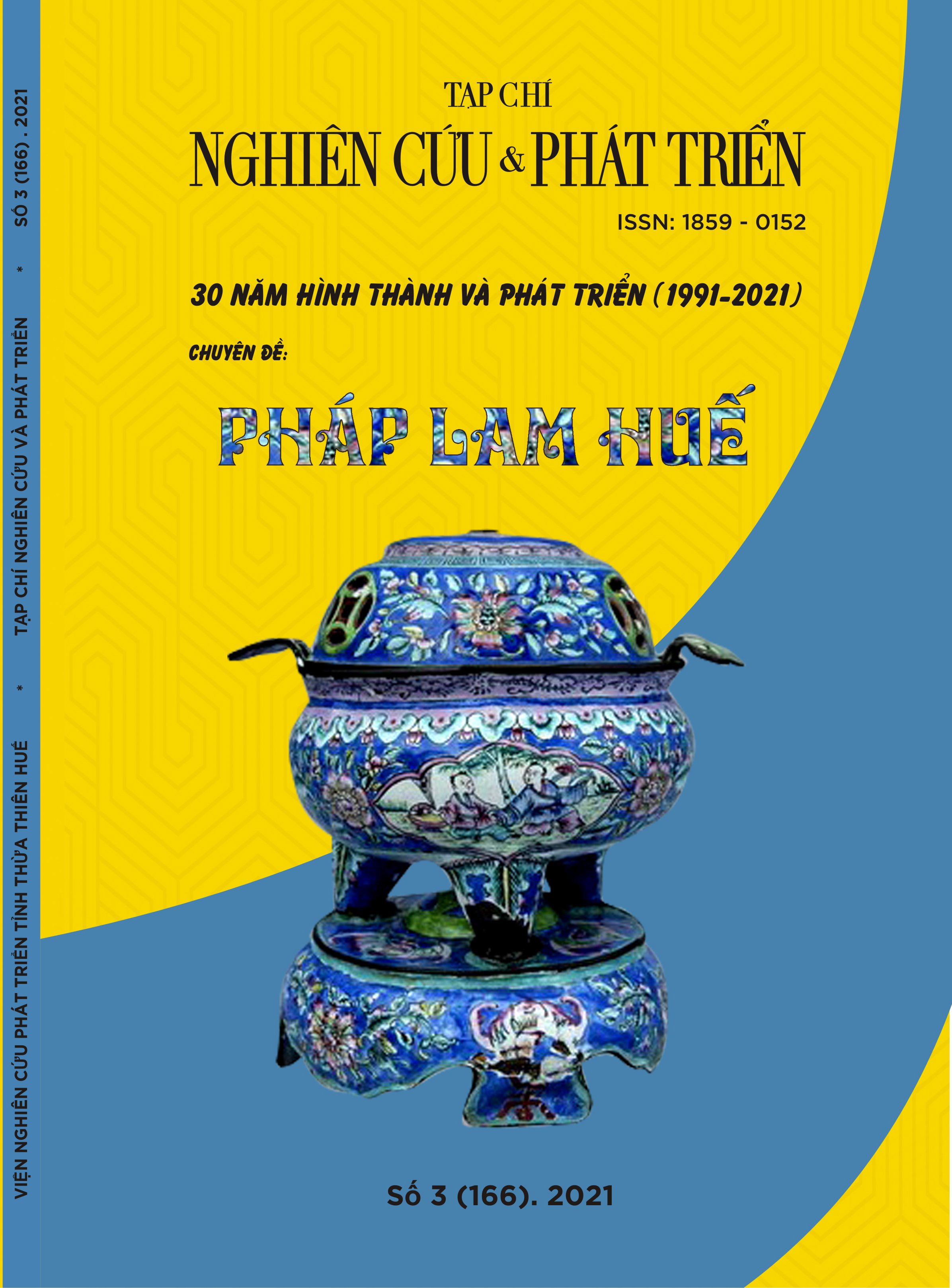Looking at Falang in Beijing, thinking about Huế Enamels.
Abstract
ABSTRACT
LOOKING AT FALANG IN BEIJING, THINKING ABOUT PHÁP LAM HUẾ
China owns a lot of outstanding handicrafts, among them is Pháp lang (Falang), or known as Cảnh Thái lam (Jingtailan), that is a favourite and famous all over the world. In the early Ming Dynasty, the court established a workshop for making cloisonné at Nam Kinh. At present, the old Palace Museum in Beijing still preserves the most ancient specimens of pháp lang bearing the inscriptions: Đại Minh Tuyên Đức niên chế (made during the reign of Xuande, Great Ming) or Tuyên Đức niên tạo (made during the reign of Xuande) (1426-1435). In the reign of the Emperor Jingtai (1450-1456), in Beijing the pháp lang technique had reached a highpoint. Both the quantity and quality of products outdistanced the former times. Initially, China must import material for making pháp lang from Europe (Italia, France). In the Yongzheng period in 1728, Tạo biện xứ belonging to Nội vụ Phủ tound domestic material to manufacture falang enamels and created a great deal of original colours and types of product. Pháp lang product of the Yongzheng reign is characterized by its decoration consisting of bright multi-coloured designs, poems and imprints on the white enamel background by Chinese painting tradition. Under the reign of Emperor Qianlong (1736-1795) coloured powder was created, so product of this period was more colourful. In the late Qing Dynasty, the pháp lang technology became quickly decadent. At present, Chinese government is especially interested in restoring traditional handicrafts to serve tourist market.
Related to Huế enamels, Minh Mạng Emperor (1820-1841) named this high-grade fine handicraft pháp lam. Vietnamese people learned this technique from the Guandong craftmen, China and its way of making is not too sophisticated and don’t require many periods in manufacturing process like that of Cảnh Thái lam. It is applied after the technique of Thiêu từ pháp lang. Artisans painted directly decorative designs in coloured enamels onto a bronze base with a brush (this base had not been stuck metal strips but had been covered with a layer of suitable glaze) or porcelain base (porcelain presented by England, France). During the time of Minh Mạng, Thiệu Trị and Tự Đức Emperors, the workshop for making enamelled wares in Huế capital manufactured a lot of enamelled wares used for ritual activities, decoration and daily use according to requirement of the royal family and the court. After the evenement falling of the Huế Imperial Capital (1885), Đồng Khánh Emperor re-established the Pháp lam Tượng cục. Regrettably, because of a scanty national budget they couldn’t buy material from abroad to make enamelled wares as previously. In the time of the last emperors of the Nguyễn Dynasty, the pháp lam wares was abolished and this production branch gradually disappeared right at the cradle where gave it a birth.

